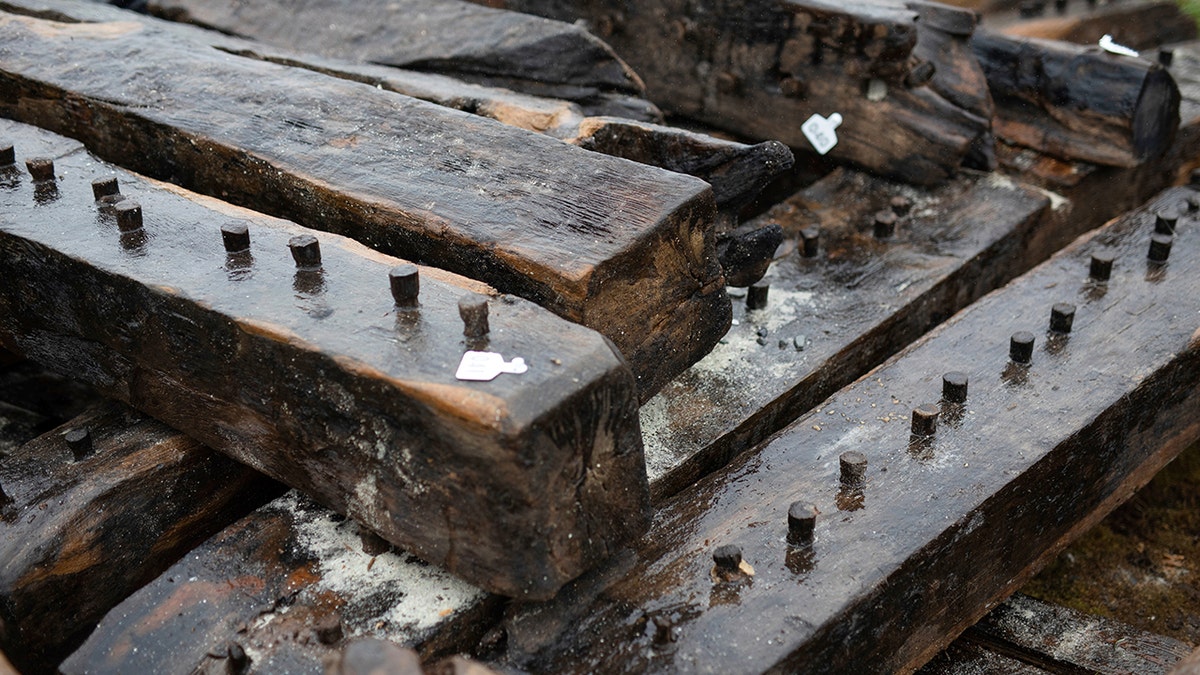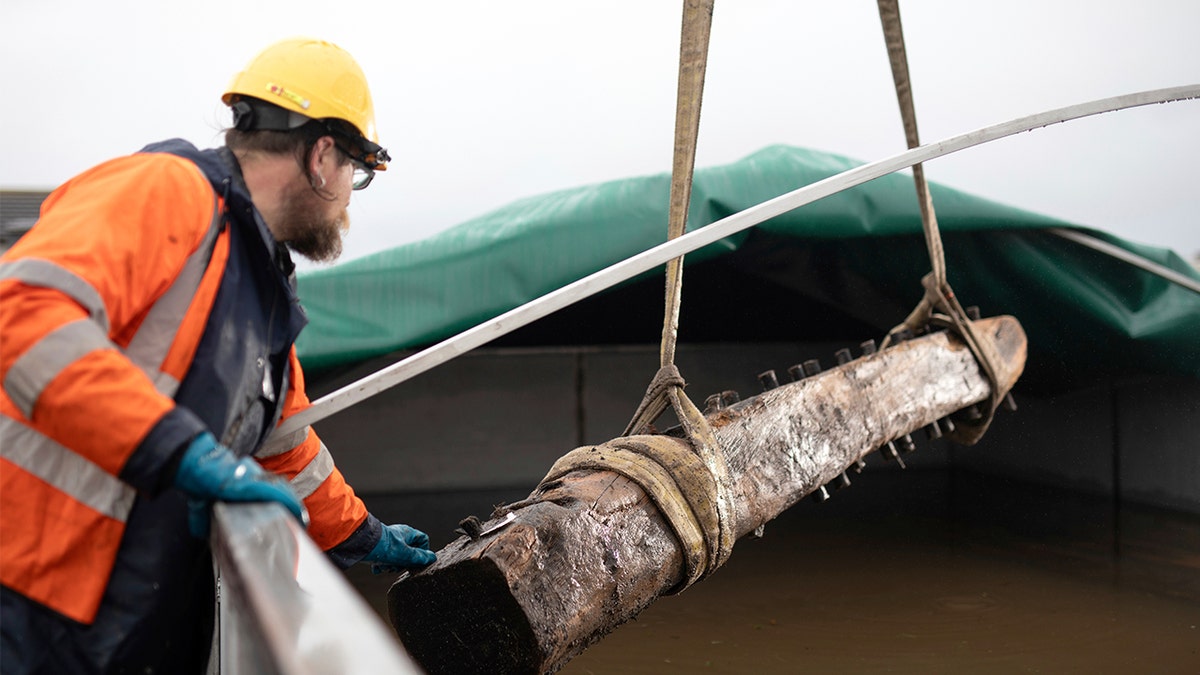NEWYou can now listen to Fox News articles!
A long-lost warship connected to the American Revolution has resurfaced off a Scottish island, courtesy of a well-timed storm — and it tells “a fascinating story,” those involved said.
The wreckage was first spotted by a schoolboy in Feb. 2024. He noticed the ruins after a storm swept away sand on a beach in Sanday, one of Scotland’s remote Orkney Islands.
After over a year of research by historians and local residents, Wessex Archaeology recently identified it as the Earl of Chatham, an 18th-century warship. The group shared the news in a Facebook post and on its website.
CAPTAIN COOK’S LEGENDARY SHIP FINALLY IDENTIFIED NEAR NEW ENGLAND RESORT AFTER 250 YEARS
Pictures show the wooden ribs of the ship poking out of the dunes, still miraculously well-preserved 230 years later.
The ship was built in Chichester, England, in 1749. It traveled widely across the Atlantic, from Canada to Greenland.
The vessel was used as a convoy escort by the British during the American Revolution before it was sold off to whale hunters in 1784, the reports noted. Whale oil, an essential source of fuel during the Industrial Revolution, was coveted at the time.
In 1788, the ship met its end during a period of bad weather near Sanday – but all 56 crew members survived.
“Quite a few people are really getting interested in it and becoming experts.”
Ben Saunders, senior marine archaeologist at Wessex Archaeology, told The Associated Press (AP) the identification required a process of elimination.
DEADLY SHIPWRECK UNCOVERED BY FORMER MILITARY PILOT WHO SPOTTED ONE HISTORIC CLUE
“You remove ones that are Northern European as opposed to British, you remove wrecks that are too small or operating out of the north of England and you really are down to two or three … and Earl of Chatham is the last one left,” he said.

The Sanday community, made up of 500 people, was thrilled about the discovery.
The island has been the site of around 270 shipwrecks since the 1400s.
Local farmers quickly got involved in the archaeological efforts.
They used their tractors and trailers to haul roughly 12 tons of oak timbers off the beach.
“I would regard it as a lucky ship, which is a strange thing to say about a ship that’s wrecked.”
Sylvia Thorne, one of the island’s community researchers, called the endeavor “really good fun.”
“It was such a good feeling about the community – everybody pulling together to get it back,” she said.
For more Lifestyle articles, visit foxnews.com/lifestyle.
“Quite a few people are really getting interested in it and becoming experts.”
With the community effort, Saunders said he regarded the ship as “lucky,” along with the fact that no crew members died.

“I would regard it as a lucky ship, which is a strange thing to say about a ship that’s wrecked,” Saunders said.
“I think if it had been found in many other places, it wouldn’t necessarily have had that community drive, that desire to recover and study that material, and also the community spirit to do it.”
“Incredible. Great job,” commented a reader about the research efforts on the group’s Facebook page.
The Associated Press contributed to this report.
Read the full article here







Leave a Reply